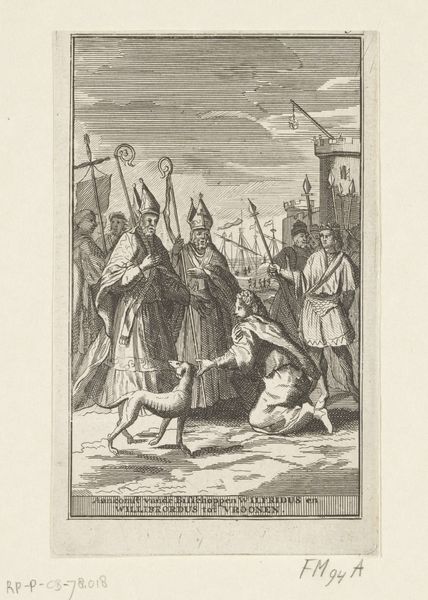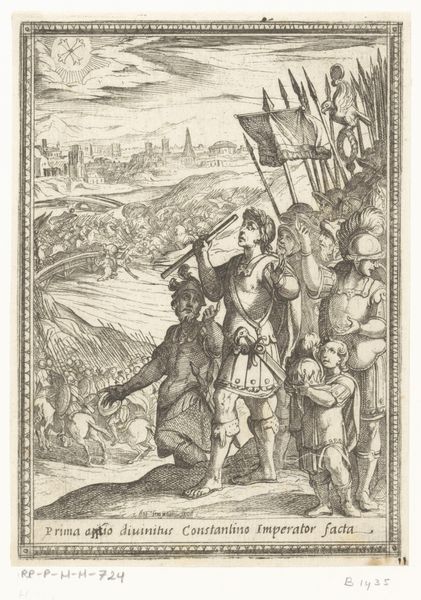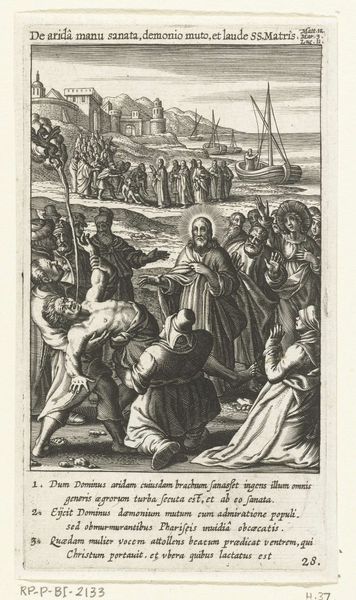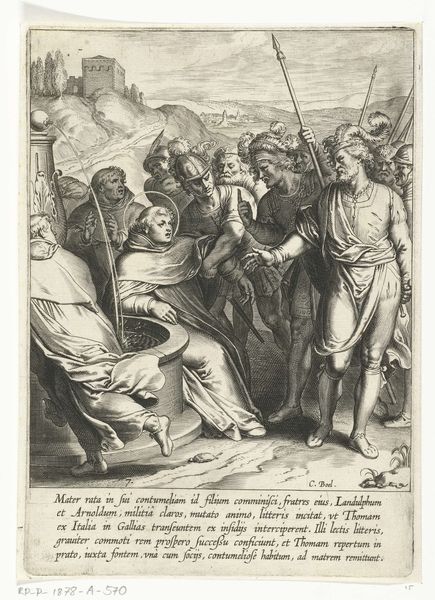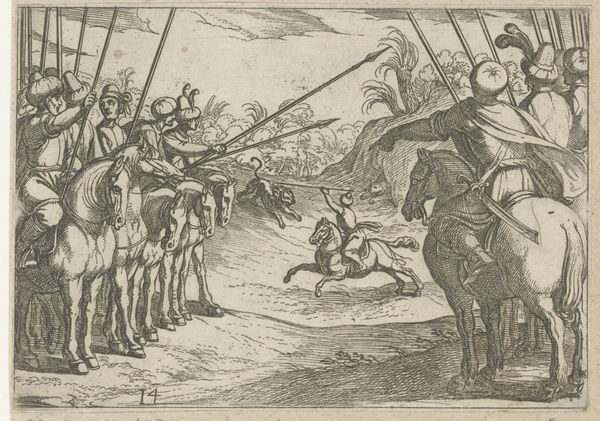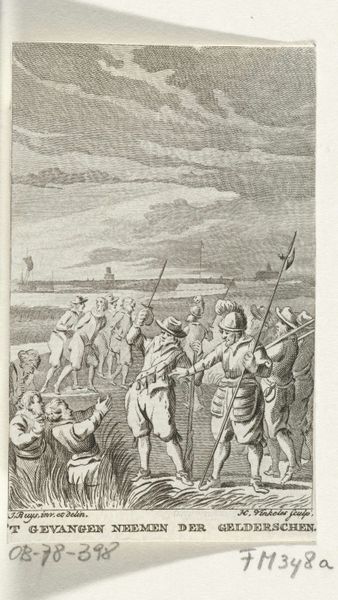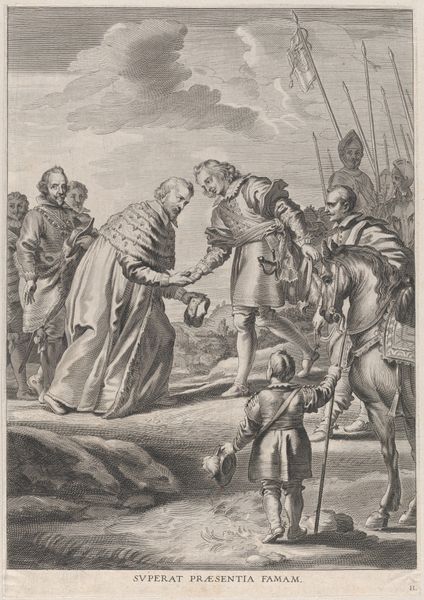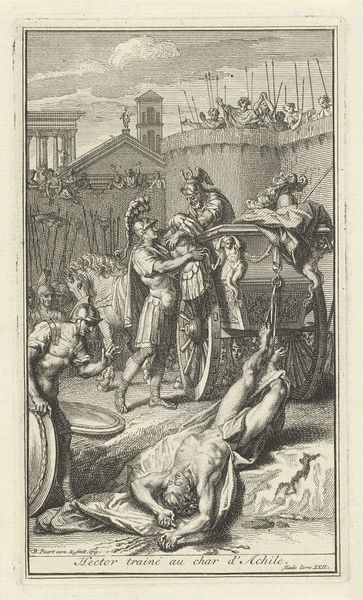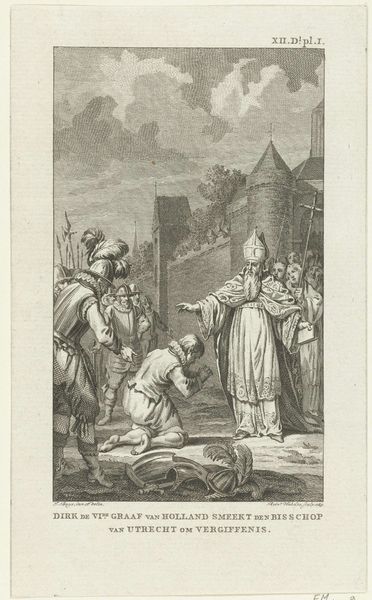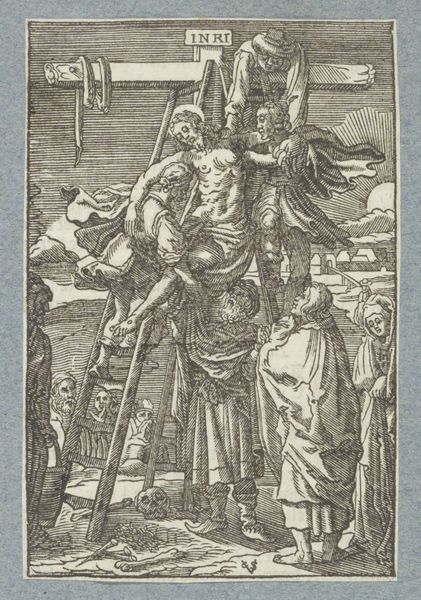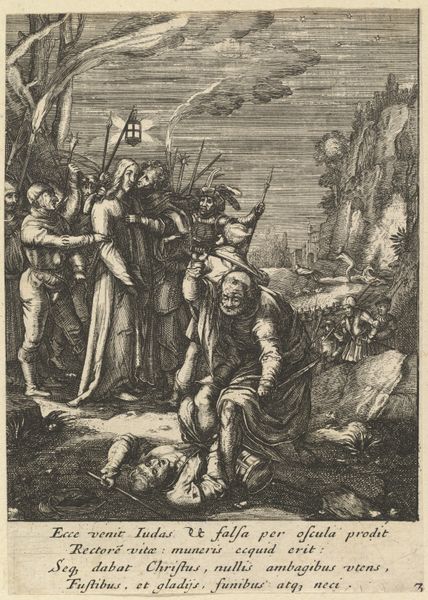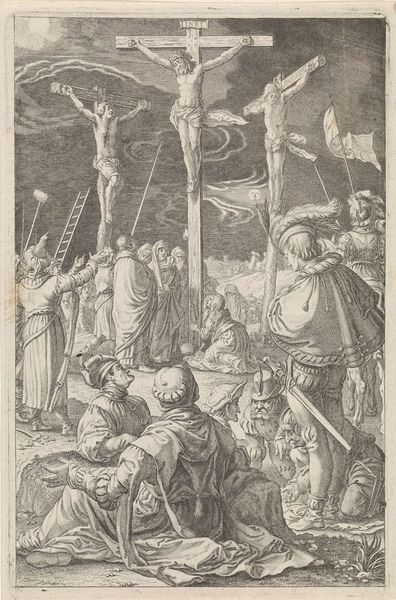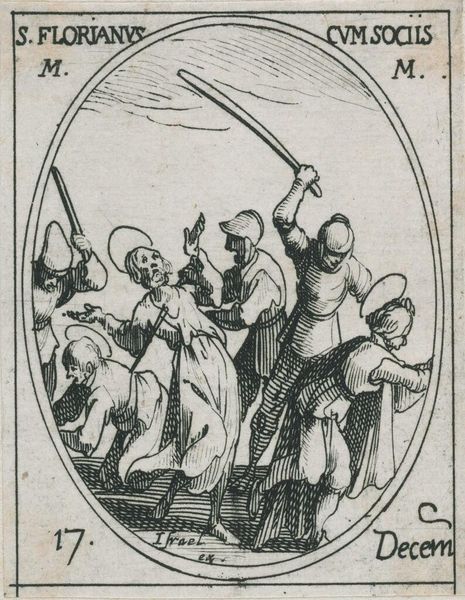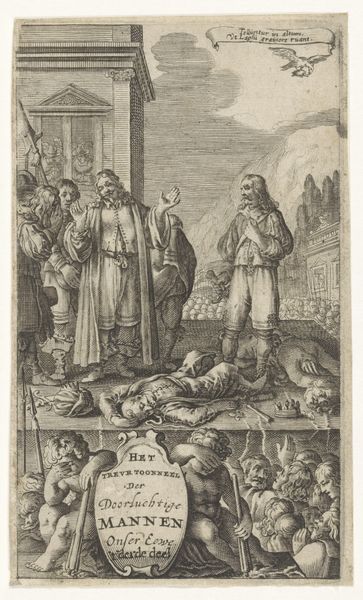
print, engraving
#
narrative-art
#
baroque
# print
#
figuration
#
history-painting
#
engraving
Dimensions: height 160 mm, width 93 mm
Copyright: Rijks Museum: Open Domain
Curator: Here we have Pieter van den Berge's engraving, "Arrival of Willibrord in Vronen," dating from sometime between 1694 and 1737, housed here at the Rijksmuseum. What catches your eye? Editor: Immediately, the dog! That scraggly fellow in the foreground. The whole scene feels... stiffly formal, but that dog’s just sniffing the ground, totally unaware of the momentous occasion. I love it. And just look at the process and its relationship to reproduction - an early print with a relatively clear statement about the role and the power of the church, with Willibrord looming above what looks to be local nobility. Curator: Absolutely! It's such a wonderful contrast. Willibrord’s arrival—almost a performative act. Note the way the supplicant reaches out, maybe she wants to touch the dog, perhaps a symbol of pagan connections? It feels like a dance between worlds. Editor: It's definitely staged for maximum symbolic punch, isn’t it? The towering bishops, those weighty robes... this engraving’s all about the imposing material presence of the Church. But is that imposing presence actually a distraction from the people actually trying to come to grips with these social and political changes that it represents? I imagine those textiles and vestments weren't exactly cheap, either. Someone, somewhere, labored for this… Curator: The very act of converting, both bodies and beliefs, into objects is an alchemical thing, isn’t it? Turning devotion into durable, visual signs...that reminds me: the flat horizon beyond and then the port structures further afield. This isn't just a religious scene; it’s a display of political power embedded in a network of global trade. Editor: Good eye! That connection of power is precisely material. The Church isn't just selling salvation; it's selling social stability and opening up new lines of material exchange, all rendered on this single sheet. The production is part of the political theater itself. What's more imposing - those bishops, or the systems they both enable and need to justify themselves. Curator: Maybe it’s both, or even the friction between them. That sense of trying to reconcile faith and its worldly manifestations—like capturing a ghost in a very solid machine. It always feels like something's left behind, hovering just outside the frame. Editor: Perhaps in those fine, tightly woven robes, or the dog. I can’t say. Regardless, what starts as faith turns into commodities… always. Curator: Hmm...a provocative notion indeed. Regardless, a reminder to look closer at what our beliefs leave in their wake, etched on the world.
Comments
No comments
Be the first to comment and join the conversation on the ultimate creative platform.
